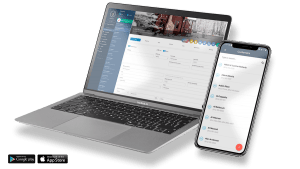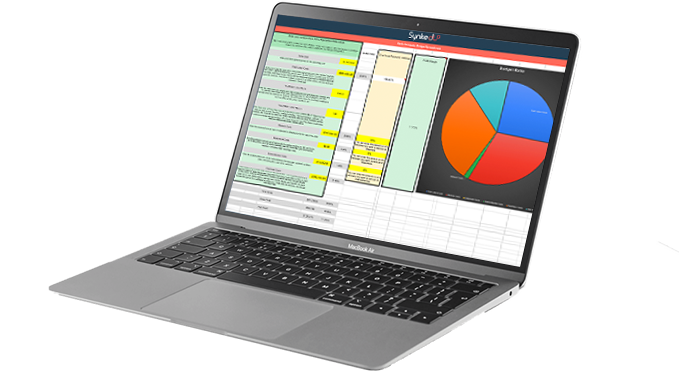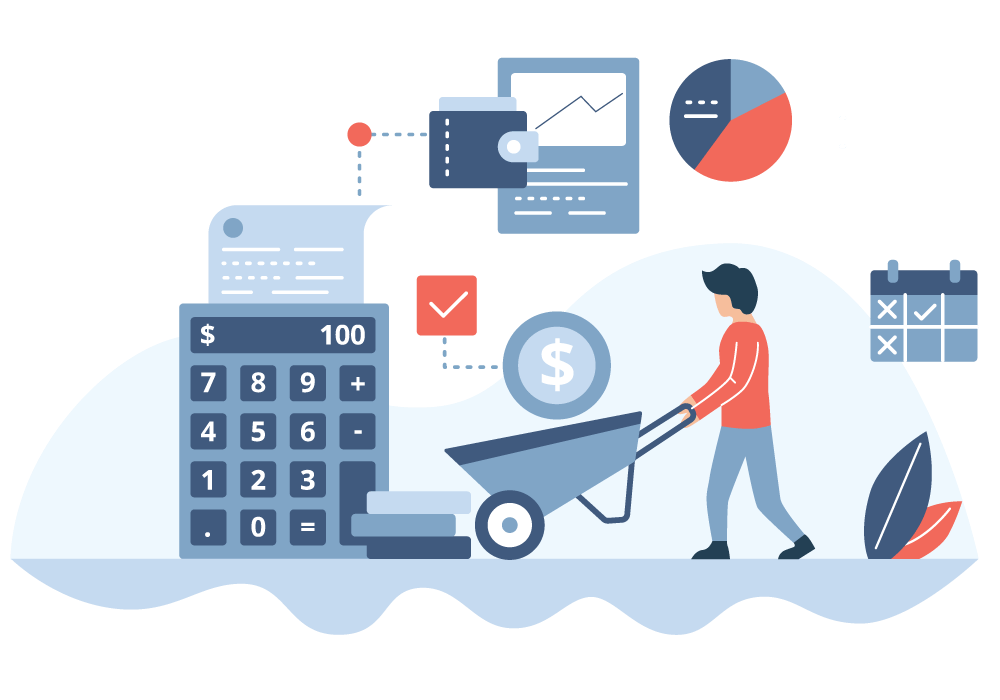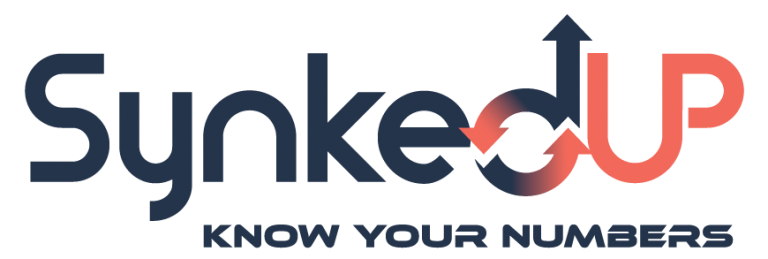How to Job Cost and find out if you made a profit
How to Job Cost

“WHY” should you job cost?
Job costing is a relatively simple concept: You take what you charged for the job, takeaway all your expenses, and what is left is your profit. To find out what is left, or what profit you made, is job costing defined. However, if you want to get more advanced, why not compare what you estimated you’d earn in profit, with what you actually earned in profit? In fact, I’d argue this is where the real value of job costing comes in.
Why is comparing estimated vs actual more valuable info? Because doing this gives you a frame of reference. It’s your scorecard on how well done or accurate your estimate was. It’s your feed back loop.
Let me draw out a scenario: If you estimated jobs on a regular basis, but never job costed, how will you know whether your estimates are accurate or not? I’ll tell you how. At your year end meeting with your CPA. When they grimly tell you that you failed to earn any profits that year.
Here’s another scenario for you: You estimate jobs on a regular basis, you job cost each one, meaning you look back over your actual expenses for that job plus the overhead expenses you incurred while doing that job, and you determine what you made in net profit. If you met your net profit goal, or hit what you estimated or better, then great! You know you did a good job estimating it. If you learn you actually did not make the profit you estimated you would, well, now you have the knowledge. Now you can think back over that job and analyze where the actual expenses differed from what you had estimated your expenses would be. Now, at least you are armed with this experience, so that next time you estimate a similar job, you won’t make the same mistake.
If you work on larger jobs that are broken out across multiple line items or sections, you can get even more super diligent by tracking your estimated/actual revenue and expenses on a per line item basis, instead of just on the job as a whole. This would enable you to dig in to the job cost report to see that you did pretty well on this and that part (or line item) of the job, but maybe missed the mark on the other line item. Now you are even more honed in, and know what estimating mistakes to avoid for the next time.
Again, the whole point of job costing is to provide that frame of reference or feedback loop to avoid making estimating mistakes repeatedly. This safeguards your profits, and allows you to make mid-year corrections before you meet with your CPA at the end of the year 😉 It helps you keep your jobs correctly priced, so that you aren’t underselling yourself, but are also not over-pricing and potentially losing jobs to the competition. You are able to repeatedly and accurately come within a few percentage points of your goal for net profit.
“HOW” to job cost
So now, let’s get in to the “how”.
There’s really 5 elements in the estimating and job costing process:
- Estimating labor costs
- Estimating material costs
- Estimating equipment costs
- Estimating subcontractor expenses
- Estimating overhead that needs recovered
- Adding your desired profit margin to all of the above
- Coming up with the Quoted Price that you will submit to the customer.
Now, assuming you got the job, you go do all the work. As you complete the work, you track everything. All your expenses. For most contractors, the only way this actually gets done in the real world is if you create a daily process for it. Each day, track your hours (labor expenses), materials, used, equipment used, subcontractor expenses, and making sure it gets documented.
Then, at the end of the job, you take all your documentation, and tally up all your expenses. You then take the number you billed your customer and deduct all your expenses. What is left is your profit. Convert that profit to a percentage; is it what you were shooting for? If it’s less, take note. Next time you estimate a similar job, adjust your estimate to not repeat the same mistake. If it is what you were shooting for or better; awesome. You know you did a good job on the estimate. In fact if it is significantly better, maybe you can drop the price a bit on the next similar job and have a better shot at winning more work.
Now on this subject of profit, let’s clarify between gross and net. Gross profit would look like this:
- Price of job
minus- Labor expenses
- Material expenses
- Equipment expenses
- Subcontractor expenses
- Gross profit
But what about Overhead?
Gross profit does not account for your overhead expenses. Overhead expenses are your costs to stay in business, that do not get billed directly or passed on directly to a job or customer. Examples would be your back office admin staff wages, insurances, the light bill, your vehicles, etc. So how can we track that too and deduct that off of each job to generate a true profit report? On every job. Well, theres a way.
How to find a true net profit
Build a company budget. Now, before you get that deer in the headlights look and click off this page, just bear with me minute. It is not as hard or difficult as it may appear. You can get your finger on the pulse of this with even a super basic company budget. By super basic, I mean all we need is 6 numbers about your company’s financials.
- Total annual sales
- Total annual cost of materials that get billed directly to a job
- Total annual labor/payroll
- Total annual equipment expenses
- Total annual subcontractor expenses
- And, last but not least, total annual overhead expenses.
If you use an accounting software (such as Quickbooks) these 6 numbers should be pretty easy to get. If you don’t know how, ask your accountant, they’ll be able to pull them up for you pretty quickly.
Now, once you have these numbers, go plug them in this spreadsheet.
The goal of this spreadsheet is to determine our Overhead Recovery Multiplier. And secondly, to determine exactly where we are going to recover those overhead expenses. We recommend recovering maybe a smaller 10-30% on materials, and then whatever is left, on labor.
Now that you have Overhead Recovery Multipliers
Now, assuming you used that spreadsheet and got your overhead recovery multipliers for labor and materials (or whatever other class you chose to recover them on) let’s go back to this process of building an estimate. This time we will estimate like this:
- Labor expenses x OH Recovery Multiplier x Profit Margin = Customer’s price for the labor
- Material expenses x OH Recovery Multiplier x Profit Margin = Customer’s price for the materials
- Equipment expenses x OH Recovery Multiplier x Profit Margin = Customer’s price for the equipment
- Subcontractor expenses x OH Recovery Multiplier x Profit Margin = Customer’s price for the subcontractor
The total of all 4 of those line items above equals the price you will quote the customer for the work. Except this time, we also know how much overhead recovery this job is generating. Now we can estimate our true net profit off of this job.
So, again, we now go do the work. Again, we are tracking every expense each day. At the end of the job, we take all those expenses and the overhead recovered, and now we can report our true net profit. The cash that is truly left over after all your job expenses are paid and all your expenses to be in business during that time frame. The office admin’s salary. The electric bill. The insurance. You name it. It’s all covered. The net profit dollar amount is your true take home profit.
So, now when we sit down to job cost this job, it will look like this:
- Price of job
minus- Labor expenses (we also multiply this by our labor OH recovery multiplier to generate our OH recovered in labor)
- Material expenses (we also multiply this by our material OH recovery multiplier to generate our OH recovered in materials)
- Equipment expenses (we also multiply this by our equipment OH recovery multiplier to generate our OH recovered in equipment)
- Subcontractor expenses (we also multiply this by our subcontractor OH recovery multiplier to generate our OH recovered in subcontractor)
- Equals Gross profit
- Minus overhead recovered (add up all the OH recovered across all 4 classes above)
- Equals True Net Profit
That process right there is how to job cost. It’s not that difficult. You basically are adding up, dividing etc across those 6 different elements:
- Price of job
- Labor
- Materials
- Equipment
- Subcontractors
- OH Expenses
Using those steps I outlined, you generate your report to see how much Gross profit and Net profit you generated. You can do this pretty easily in a simple spreadsheet like this one below. It’s not hard.
FREE Job Costing Spreadsheet
Quick easy tool to find out how much money you made on your latest job 💪


This spreadsheet helped us get off the ground and charge correctly.
Caleb Crayton
Kindred Outdoor Solutions
So why is Job Costing so hard? (doesn’t get done consistently)
So… if it’s not hard, then why do most contractors not do it? Let alone on every job.
Well, I’ve lived this life as a contractor my whole career. I’ll tell you why we found it difficult. The friction point was not in plugging in the values and running the calculations across the spreadsheet. That was simple.
The friction was in tracking the actual expenses. It was hard, manual, and tedious. And we all know, if it’s hard manual or tedious, even you won’t get it done on a consistent basis. Let alone get your employees getting it done. Some other challenges around getting job costing done was: usually the office person updating the spreadsheet was not the one that actually did the work, the crew out in the field did. meaning he/she couldn’t even rely on memory to record what they used.. They relied on a hodge podge of verbal communication, text message, vendor receipts, and crumpled up notes in the job folder that came back to the office looking like a rhino trashed it.
This problem right here is what prevents most owner/operator contracting businesses from job costing on a consistent basis. And not job costing means they do not have the necessary info to make frequent and timely course corrections when things go wrong. Worse, when things are going wrong, and they know it, they are at wits end on what they need to change to fix it
The solution to automatic job costing
This is why we set out to build the solution to this dilemma. We built a system that takes the entire project lifecycle into one smooth seamless workflow. Collection the data as we go, by the people that did the work. No more 3rd party info, no more crumpled notes, no more parsing back through text messages. We spent years, thousands of hours, designing this workflow to be as intuitive and effortless as possible.
You start the workflow in this system by creating the estimate. This records all your estimated expenses and revenue. As you do the work, you clock in to the mobile app to log your hours. Employees get paid off these hours. Employees also get asked to record what materials/equipment, etc they used that day while on the job, each time they clock out.
The outcome?
Job costing done for you. Automatically. Live. On every job.
The knowledge to course correct if needed, is at your fingertips. At all times. The result of all this? You can consistently and repeatedly nail your profit goals. Essentially you are in control of your business. You know your numbers.
Ready to start being in control? Wanna know your numbers?

Enough of the chaos - organize your entire team
Truth is most available software products have the area they shine in. But we found none of them serve your entire team. SynkedUP fixes that with one seamless workflow from lead to invoicing.
Join the thousands of SynkedUP users who cut down time chasing loose ends by 50+% or more.
 !!”
!!”


Quit the phone tag - all job details at your finger tips





Know your numbers - make more money
SynkedUP puts you in control of your numbers with budgeting to dial in your pricing, and automated estimating & job costing for every job. It tracks every job for you, showing you exactly where you went right and where you went wrong. Don’t let yourself lose money and not know it!



SynkedUP features
- Customer & Lead Management
- Estimating & Job Costing
- Scheduling
- Project Management Tool Set
- Time & Material Tracking
- Invoicing + QuickBooks Online integration

What others have to say about SynkedUP 👇

